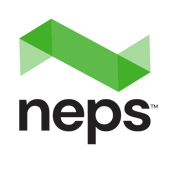What is Customer Communication Management?
Notice :
Neps and Venture Solutions are now a singular CCM powerhouse.
© NEPS.com
Although consumers see transactional communications every day, few people understand the processes behind them.
These communications are managed by a service called Customer Communication Management, often referred to as CCM. It manages the transactional communication between a business and its customers, such as contracts, invoices, statements, notices, and letters. It encompasses a broad array of pre-production, production, and post-production services.

How CCM Communication Differs from Marketing Communication
Customer Communication Management joins marketing communication as the two main components of enterprise communication. Marketing communication nurtures customer relationships, sells them products, and works to retain them. CCM supports the transactional communication that follows. Because of that, it has different requirements and standards than marketing communication:
- While marketing programs often have specific start and end dates, transactional communications are run continually—daily, weekly, monthly, quarterly, or annually—to keep the customer informed and responsive.
- As such, CCM handles large amounts of sensitive personal data, classified as Personal Identifiable Information (PII) and Personal Health Information (PHI). PIIs and PHIs can include information pertaining to loan foreclosures, past due payments, health statements, account balances, and contract obligations.
- CCM relies heavily on this data to stay on top of critical transactions. Aggressive production deadlines are often 24–48 hours after input data arrives to ensure communication between business and customer is timely and efficient. Conversely, marketing communications are built several months in advance.
- While marketing campaigns usually focus on marketing output—the advertising product—businesses continually depend on CCM to manage both incoming and outgoing transactions from the customer. This includes 100% fulfillment of all input records, post-production verification of mail/content sent, and business rule programming and testing. These processes involve frequent changes to document templates and content as technology, customer needs, regulations, and business goals continue to evolve over time.

History and the Onset of Digital Transformation
Throughout most of its history, transactional communication was print and mail communication. It was a highly analog industry, relying on pre-printed stock, limited variable content in black ink, few if any graphics, and poor customer experience. However, during the past twenty years, the industry has undergone a significant digital transformation. This has meant full expansion into electronic delivery channels; a greater use of variable data, graphics, and color to improve communication; the rise of self-service solutions; and a focus on the customer experience. No longer just a transactional print service, the industry is now better defined as Customer Communication Management.

CCM Workflow Components
The three key components of CCM processing and manufacturing are:
Processing Input Data
Most companies have a collection of internal information systems storing customer data that have been built up over decades of acquisition and expansion.
Among the most challenging aspects of CCM manufacturing is processing this data, with its wide variety of file formats and data types, to in turn produce communication output. A single customer communication piece may require data from two or more internal sources and often needs to be managed and output within stringent deadlines. Other times, the input is a fully pre-composed PDF document instead of raw data, adding another layer of operational stress.
Composing Pages
The processed input data is then used to compose the pages, in paper or electronic format, the customers will eventually read.
Key aspects of page composition include:
- Managing both raw and pre-composed data brought into the composition process and their corresponding templates
- Composing and proofing documents in a way that meets all requirements for the delivery services, including for USPS for mail, ISPs for email, and telecoms for SMS text
- Enacting programmatic changes to map how the variable input data is integrated into the static content template
- Creating the file of composed documents according to the requirements of the production and delivery
Page Output and Delivery
In the CCM industry, the primary delivery channels are print/mail, email, and SMS text; often, email and SMS channels are used in conjunction with online viewing, using portals or personalized URLs. These pages are composed for each channel from a single source and workflow—an “omni-channel” approach.
In previous years, each channel had its own composition and workflow approach, creating a denser, more siloed approach. Omni-channel methods, however, have been proven to reduce costs and create efficiencies that better honor consumer delivery preferences.

CCM Trends
In-Plant CCM Production Companies Examining Outsourced Management
- CFPB - Consumer Finance Protection Board
- CMS - Centers for Medicare and Medicaid
- SEC - Securities Exchange Commission
- DOL - Department of Labor
- OCC - Office of the Comptroller of the Currency
- FTC - Federal Trade Commission
Digital Transformation of CCM
CCM strategies continue to shift away from print media and toward digital delivery, though at an evolutionary pace rather than a total upheaval. There are several reasons why print and mail remain a prominent delivery channel amidst technology advances:

- Regulatory mandates (particularly from the CFPB) require hard copy notices to be used for hallmark events such as a property foreclosure, loan default, or payment past due communications. Electronic communication is still used in this setting but only in parallel with the required hard copy communication.
- Because most CCM communications contain PPI and/or PHI content, there are elevated concerns around the privacy and security aspects of electronic delivery.
- Consumers often want paper records for key documents such as mortgage and escrow statements, health billing, and student loans; in fact, research shows that many consumers want both electronic and paper versions of key financial and healthcare documents.

Customer Communication Platform
- Intake and process the many variations of input data from multiple information systems
- Compose and distribute documents for multiple delivery channels, including mail, electronic, and online viewing
- Prepare files specific to the manufacturing delivery process, whether it be a specific print production provider, electronic document, or an electronic archive used for online search/display solutions
- Provide real-time status information to verify that the process is unfolding properly
- Utilize self-service tools to quickly adjust documents as needed during data processing and page composition
- Offer an online interface and supporting functionality that allows the average user to manage changes between production runs
For more in-depth information about CCM platforms, please read our blog, WHAT IS A CCM PLATFORM?

The Expertise Needed to Run CCM Programs
- Legal regulations and compliance
- Technology infrastructure, including security and business continuity
- Data input processing
- Page output composition
- Business rule gathering and requirements
- Change management infrastructure
- Service staff with experience in each industry vertical
- Self-service online tools

Benefits of Working with a Top-Tier CCM Provider
- Follow industry trends and make the investments required to stay efficient, current, and compliant. This includes recruiting and retaining staff in an increasingly competitive technical environment.
- Handle manufacturing of both print and electronic output, which is rarely within the bounds of a company’s core focus
- Provide a 360-degree approach that includes not just processing and manufacturing but content management as well
- Have highly experienced client service professionals who are dedicated to your account for CCM-specific strategic and operational assistance
- Be familiar with the risk components unique to CCM production and help you manage them
- Have a disaster recovery program, which has become even more of a necessity in recent years

Case study of a top-tier CCM provider, Neps




